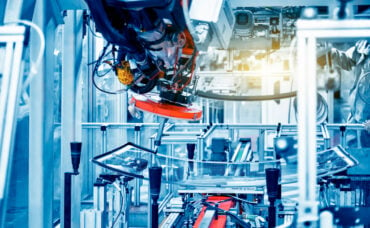Understanding the Styles of Glass Grinding
Glass grinding, a critical process in various industries, is a skillful blend of technique and precision. The utilization of glass wheels has significantly enhanced the efficiency and accuracy of glass processing. Let's delve deeper into the different styles of glass grinding, each unique in its approach and outcome.
In-Depth Look at Glass Grinding Styles
1. Glass Beveling: Crafting Elegance
In the art of glass beveling, the focus is on creating an angled surface along the edges of glass, often used for automotive glass. This process requires precision to ensure a consistent angle and smooth finish. Metal bond diamond wheels are the preferred choice for their durability and ability to handle various glass thicknesses. The key to successful beveling lies in selecting the right grit size and maintaining a steady grinding pressure on a CNC grinder to achieve the desired beveled edge.
2. Pencil Edge Grinding: The Subtlety of Curves
Pencil edge grinding is renowned for its rounded finish. The technique involves using diamond electroplated grinding wheels to shape the glass edge into a smooth, curved profile. Metal bond diamond wheels are favored for their longevity, ensuring a consistent, chip-free finish. The precision in pencil edge grinding is critical to achieving uniformity in the curved edge, enhancing both the aesthetics and safety of the glass piece.
3. Optical Grinding: The Quest for Precision
Optical grinding is a high-stakes process where precision is paramount. Employing superabrasive diamond tools, this method is essential for shaping lenses and mirrors with exact dimensions and finishes. The process typically involves multiple stages, starting with a coarser grit for rough shaping and gradually moving to finer abrasives for a polished finish. Effective coolant use is crucial in optical grinding to prevent overheating and maintain the integrity of delicate glass materials.
4. Finish Grinding: Achieving Flawless Surfaces
Finish grinding is all about attaining that impeccable surface quality. Whether it’s in the automotive industry or decorative glass, this final grinding stage uses finer grit diamond wheels to produce a smooth, blemish-free surface. The process might employ various grinding wheels, including cup wheels or flat edge wheels, tailored to the desired finish. Consistency and gentle handling are key factors in finish grinding, ensuring a flawless surface without compromising the glass's integrity.
5. Cutoff Grinding: Precision and Clean Cuts
Cutoff grinding is essential for accurately sizing and shaping glass pieces. It employs thinner diamond grinding wheels, designed to make precise, clean straight-line cuts without causing damage or chipping. The wheel type, speed, and control of the grinding machine are critical in achieving clean, straight cuts. This method is particularly important in industries where precision is crucial, such as in manufacturing glass components for technology or automotive applications.
Factors Influencing Glass Grinding
Grit Size and Wheel Type
The choice of grit size significantly impacts the grinding process. Coarser grain sizes are used for more aggressive material removal, while finer grits are ideal for achieving smooth finishes. The wheel type, from metal bond to resin bond, is chosen based on the specific stage of grinding and the type of glass being processed.
Coolant Usage
Coolants play a vital role in glass grinding, helping to prevent thermal damage and extend the wheel's lifespan. They also aid in removing glass debris, ensuring a clean grinding surface. Most CNC machines are fit to supply high-pressure coolant to the grinding area to ensure a clean grind
Addressing Chipping
Minimizing chipping is a primary concern in glass grinding. Careful selection of wheel type, proper wheel speeds, and maintaining a steady feed rate are essential practices to reduce the risk of chipping.
Durability of Metal Bond Diamond
Metal bond diamond wheels are renowned for their durability and strength, making them ideal for prolonged grinding sessions and tougher glass materials. They ensure consistent material removal and are essential for processes like beveling and pencil edge grinding. Metal bond grinding tools are the best choice for high production, while resin bond grinding wheels are great for cost-effectiveness.
Polishing and Finishing
Polishing wheels and finer grit diamond tools are crucial in the final stages of glass grinding, ensuring the glass piece not only meets functional requirements but also exhibits a visually appealing finish.
![]()
Glass grinding, with its diverse techniques and specialized tools, remains an essential process in shaping and finishing glass products. From elegant bevels to precise optical components, the expertise in glass grinding reflects a perfect harmony of skill and technology. As the glass industry continues to evolve, so too will the techniques and tools of glass grinding, pushing the boundaries of quality and design in glass products.
Recent Posts
Subscribe to email updates
Subscribe to our blog to get the latest updates from the experts on Grinding Wheels! You can easily unsubscribe at any time





